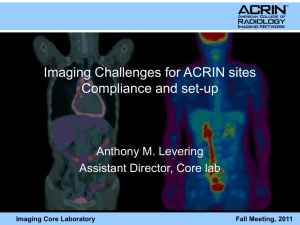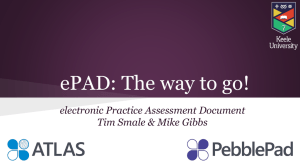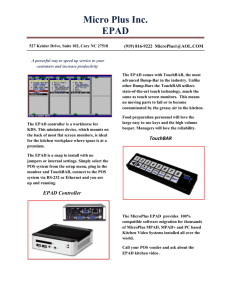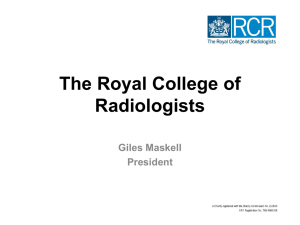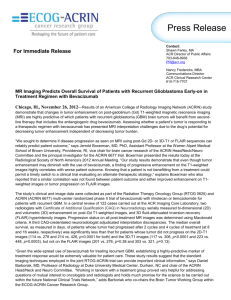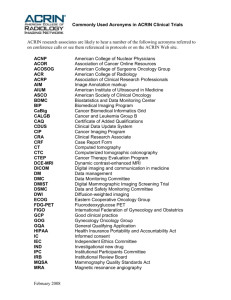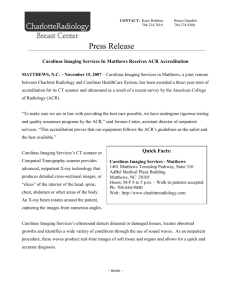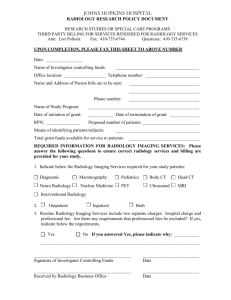Read the full release
advertisement
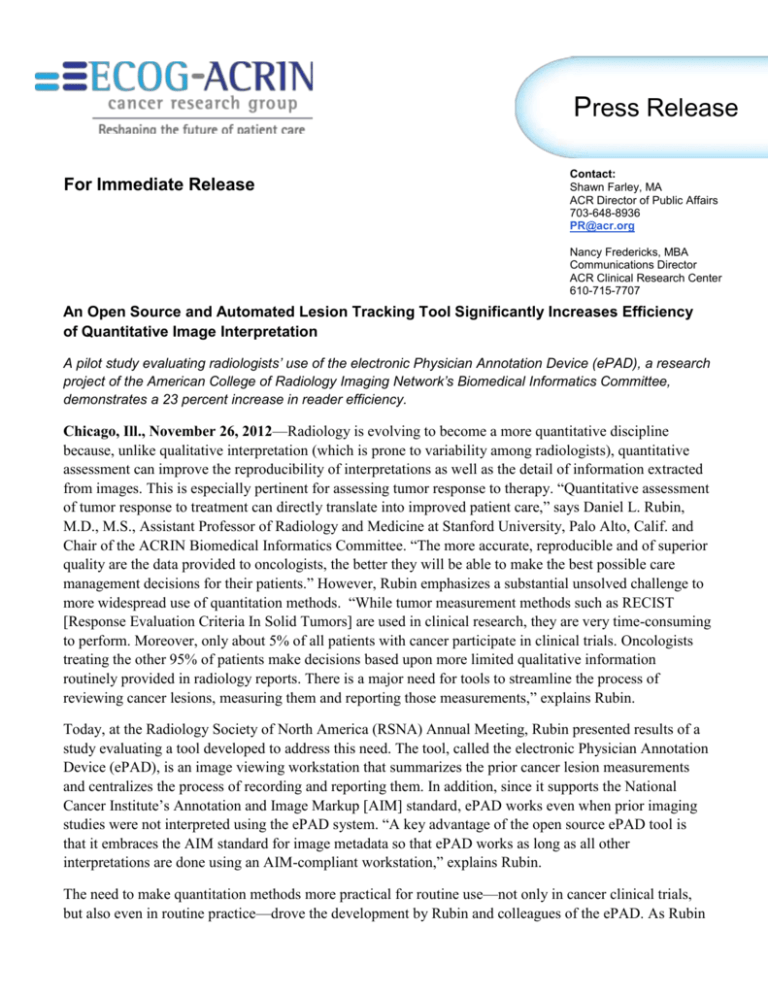
Press Release For Immediate Release Contact: Shawn Farley, MA ACR Director of Public Affairs 703-648-8936 PR@acr.org Nancy Fredericks, MBA Communications Director ACR Clinical Research Center 610-715-7707 An Open Source and Automated Lesion Tracking Tool Significantly Increases Efficiency of Quantitative Image Interpretation A pilot study evaluating radiologists’ use of the electronic Physician Annotation Device (ePAD), a research project of the American College of Radiology Imaging Network’s Biomedical Informatics Committee, demonstrates a 23 percent increase in reader efficiency. Chicago, Ill., November 26, 2012—Radiology is evolving to become a more quantitative discipline because, unlike qualitative interpretation (which is prone to variability among radiologists), quantitative assessment can improve the reproducibility of interpretations as well as the detail of information extracted from images. This is especially pertinent for assessing tumor response to therapy. “Quantitative assessment of tumor response to treatment can directly translate into improved patient care,” says Daniel L. Rubin, M.D., M.S., Assistant Professor of Radiology and Medicine at Stanford University, Palo Alto, Calif. and Chair of the ACRIN Biomedical Informatics Committee. “The more accurate, reproducible and of superior quality are the data provided to oncologists, the better they will be able to make the best possible care management decisions for their patients.” However, Rubin emphasizes a substantial unsolved challenge to more widespread use of quantitation methods. “While tumor measurement methods such as RECIST [Response Evaluation Criteria In Solid Tumors] are used in clinical research, they are very time-consuming to perform. Moreover, only about 5% of all patients with cancer participate in clinical trials. Oncologists treating the other 95% of patients make decisions based upon more limited qualitative information routinely provided in radiology reports. There is a major need for tools to streamline the process of reviewing cancer lesions, measuring them and reporting those measurements,” explains Rubin. Today, at the Radiology Society of North America (RSNA) Annual Meeting, Rubin presented results of a study evaluating a tool developed to address this need. The tool, called the electronic Physician Annotation Device (ePAD), is an image viewing workstation that summarizes the prior cancer lesion measurements and centralizes the process of recording and reporting them. In addition, since it supports the National Cancer Institute’s Annotation and Image Markup [AIM] standard, ePAD works even when prior imaging studies were not interpreted using the ePAD system. “A key advantage of the open source ePAD tool is that it embraces the AIM standard for image metadata so that ePAD works as long as all other interpretations are done using an AIM-compliant workstation,” explains Rubin. The need to make quantitation methods more practical for routine use—not only in cancer clinical trials, but also even in routine practice—drove the development by Rubin and colleagues of the ePAD. As Rubin describes, “ePAD enables lesion measurement and classification—for example, of a target or non-target lesion—and automated quantitative assessment of the RECIST response criteria. The radiologist simply opens an exam, and the tool presents a tabular summary of what was seen and recorded for a prior exam— the specific abnormalities, how were they measured and the measurements. By clicking on any of the measurements, the annotation and its associated image are presented to the radiologist. Any new measurements are automatically added to a summary table and a mini quantitative report is generated, so the quantitative imaging interpretation workflow is greatly enhanced.” The results of studies evaluating an earlier implementation of the tool (called “iPAD”) developed by Rubin in OsiriX, an open source imaging viewing workstation that runs on Mac computers, have been promising. In order to assess iPAD’s impact on workflow in a real-world environment, five radiologists from three different institutions were recruited to interpret 20 cases (computed tomography [CT] exams of the chest, abdomen and pelvis) that included baseline and three follow-up imaging exams using RECIST 1.1 criteria. The exams were read initially with the aid of the iPAD tool and, after a 30-day washout period, reread unassisted by the tool. On average, across the five readers, the use of iPAD produced a savings of 2.9 minutes per case, representing a net increase in reader efficiency of 23 percent. Evaluation studies similar to this one are now underway to confirm whether the re-implemented ePAD Web-based tool similarly enhances radiologist workflow in quantitative image interpretation. “Training radiologists on the tool’s use is very straightforward,” says Mark Rosen, M.D., Ph.D., Associate Professor of Radiology at the University of Pennsylvania and chair of the MRI/CT division of the ACR Imaging Core Laboratory. “Given ePAD’s ease of use and proven efficiency, further tool development, evaluation and implementation will continue to be an important informatics initiative.” The ePAD tool and its support of AIM will be featured throughout the meeting in the Quantitative Imaging Reading Room Showcase in the Lakeside Learning Center (location: QRR3003). ### About ACRIN ACRIN is a clinical trials cooperative group made up of affiliated investigators at over 100 academic and communitybased facilities in the United States and internationally. ACRIN’s research encompasses the full range of medical imaging investigation, from landmark cancer screening trials to early-phase trials evaluating imaging biomarkers and novel imaging technologies. ACRIN is administered by the American College of Radiology and is headquartered at the ACR Clinical Research Center in Philadelphia, PA. The ACRIN Biostatistics Center is located at Brown University in Providence, RI. www.acrin.org In May 2012, ACRIN merged its oncology research program with the Eastern Cooperative Oncology Group (ECOG), a membership-based research organization whose large-scale cancer treatment clinical trials for major diseases have changed the standard of care for cancer patients and helped to individualize their therapy. The ECOG-ACRIN Cancer Research Group designs and conducts clinical research along the cancer care continuum, with an integrated focus on therapeutic, diagnostic, preventative, and biomarker-driven trials. www.ecog-acrin.org
